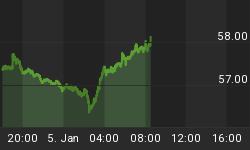The United States is not going to become energy independent because of tight oil. Period.
Reports to the contrary are based on unrealistic assumptions and projections about the long-term potential of oil production from tight formations like the Bakken Shale in North Dakota and the Eagle Ford Shale in Texas.
There are several compelling reasons for this. First, these new plays have extremely high decline rates. The aggregate decline rate of producing Bakken and Eagle Ford wells is 38% and 42% per year respectively. Conventional oilfield decline rates average 4-5% per year.
This means that the only way that production can continue to grow is by constantly drilling new wells. At roughly $10 million per well, that requires access to vast amounts of capital. Rig counts in these plays are now below the peaks. This implies that there are either capital or well performance constraints.
I estimate that 1,500 new wells must be drilled in the Bakken ($17 billion) and 800 new wells in the Eagle Ford ($8 billion) this year just to keep production from declining. Almost 70% of Bakken and almost 90% of Eagle Ford production in the first half o 2012 is from wells that began production in the last 18 months.
Second, none of the exuberant reports about U.S. energy independence discuss cost, price or profit margins they only focus on volumes. The truth is that these tight oil plays require $80-90 per barrel oil prices to break even. Oil prices have been in the $87-$95 range for the last quarter which means that profits are marginal in these plays. In fields or sweet spots operators are making money but the average well in the play loses money.
Third, the analysts who write about energy independence apparently do not understand the rich statistical history of petroleum provinces. The biggest and most productive discoveries are made early and, for the most part, subsequent discoveries are smaller and well performance is poorer. Predictions that the U.S. will surpass Saudi Arabia and Russia in oil production must assume that current discovery and production rates in the Bakken and Eagle Ford will continue, except that they never do.
The fallacy of this assumption is noted in a January 15, 2013 report by Bernstein Research: Analysis of well results in the Eagle Ford (horizontal), Bakken (horizontal), and Permian (both vertical and horizontal) suggest average per-well oil IP [initial production] rates have peaked and are currently below 2010-11 highs.
The United States consumes approximately 15 million barrels of crude oil per day and produces about 6.5 million barrels per day including the Bakken and Eagle Ford additions to date. That means that 8.5 million barrels per day must be imported.
The U.S. Energy Information Administration (Department of Energy) estimates that U.S. crude oil production will increase to nearly eight million barrels per day by 2020 and then decline. If the EIA is correct, the United States will still have to import about seven million barrels per day allowing for demand decline, and that does not look like energy independence to me.















